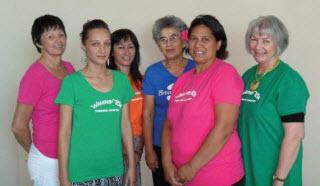- Home
- News
- Screening Matters, Issue 43, December 2013
- Targeted strategies in Hawke’s Bay see screening rates increase
News
- Screening Matters Newsletter
- April 2019
- April 2018
- December 2017
- August 2017
- April 2017
- December 2016
- October 2016
- March 2016
- November 2015
- August 2015
- June 2015
- April 2015
- February 2015
- December 2014
- October 2014
- August 2014
- June 2014
- April 2014
- February 2014
- December 2013
- October 2013
- August 2013
- June 2013
- April 2013
- February 2013
Screening Matters
The National Screening Unit newsletter
In this issue:
- Reflecting on 2013
- Cervical screening support system “saved my life” says Nikki
- Combined screening day a great success
- Others learning from Dunedin colposcopy clinic’s quality control systems
- Targeted strategies in Hawke’s Bay see screening rates increase
- The benefits of complete information on request forms for antenatal screening for Down syndrome and other conditions
- Paediatrician wins award
Targeted strategies in Hawke’s Bay see screening rates increase

Regional coordination by the population screening recruitment and retention team at Hawke’s Bay District Health Board (DHB) ensures good working relationships with all providers, particularly independent service providers (ISPs) and the colposcopy service.
Screening coordinator Lynda Otter says the ISPs and the population screening kaiawhina (community workers) not only receive referrals from services to support women to screening and assessment, but are also actively working alongside general practice to contact and visit those women who are unscreened and under screened.
“This has resulted in an increase in screening attendance including home smears if it’s the preferred option, and has had a positive impact on the relationships between general practice and Māori health providers.”
Lynda says although time consuming, the kanohi ki te kanohi mahi (face-to-face) contact has been successful in informing, encouraging and supporting women to screening and assessment services.
The DHB is currently working with the public health organisation (PHO), Health Hawke’s Bay, to implement general practice clusters around each independent service provider to make the referral process easier. There are ISPs in Wairoa, Napier, central Hawke’s Bay and two in Hastings.
“These providers know their communities and apply a whānau ora approach to ensure that at these visits not only are both cervical and breast screening needs discussed with the woman and her whānau, but also the health of the whole family. This allows for a wrap-around service and is an effective and efficient way for providers to deliver on their various health service contracts.”
The team works closely with Health Hawke’s Bay to provide support services to primary health and refine practice processes around cervical screening to make them more effective and accurate. The team has also facilitated several workshops to reflect on what ‘best practice’ for a receptionist working in the primary health care setting looks like, based on recent research.
“The workshops, and the importance of the receptionist role in making Māori feel welcome and comfortable, have a focus on making general practice ‘easier to use’ rather than Māori being ‘hard to reach’,” says Lynda.
With the PHO’s support, a total of 96 receptionists from across Hawke’s Bay, including from the DHB, have attended one of eight workshops. “We’ve already had feedback about the difference in one of the participant’s approach to welcoming patients to the service.”
Other strategies to increase screening rates include annual workplace clinics, Saturday morning clinics and developing screening champions in some local kōhanga reo and community groups to liaise with and support whānau to attend their screening checks.
“During September and October, with the PHO funding all smears, the DHB wanted to focus on increasing the number of Māori wahine smears and ran a competition to reward smear takers who provided the highest number of smears for Māori women and the practice with the greatest increase in coverage of Māori women over the two months.”
Lynda says cultural safety across the screening and treatment workforce is another challenge identified by the Hawke’s Bay breast and cervical screening steering group.
“We’re looking at how best to support, develop and implement a cultural safety framework and our initial focus will be cultural safety practices within the different disciplines, alongside service evaluation and outcome measurements.”
In 2012 there was steady progress in Hawke’s Bay cervical screening coverage rates, with Pacific, Asian and ‘other’ reaching the national target of 80 percent and Māori rates regularly tracking upwards to reach 74 percent for the first half of 2013. Lynda says the success of the targeted strategies is expected to be reflected in the next national data.
As at September 2013, Hawke’s Bay breast screening rates have reached the national target of 70 percent for Pacific and ‘other’ women. Rates are tracking upwards for Māori and are currently at 66 percent.
The Hawke’s Bay population screening recruitment and retention team is pictured above. Back from left: Sandra Corbett, Margaret Alexander, Berry Rangi and Lynda Otter. Front: kōhanga reo champions for Te Whakakotahitanga Kohanga Reo, Napier Jo Anne Boyle-Reti (left) and Queenie Anderson.
To receive the Screening Matters newsletter by email, fill out our sign-up form.

